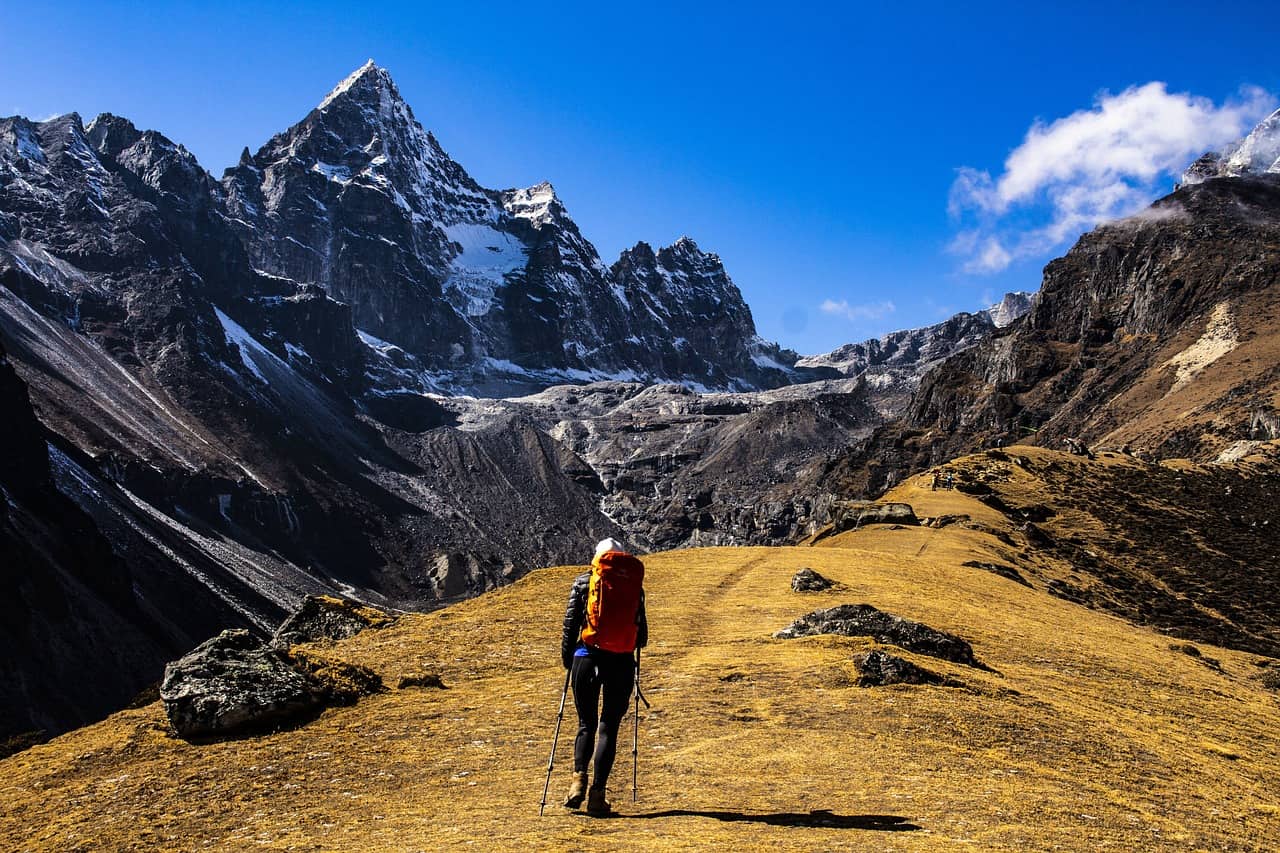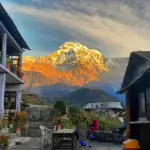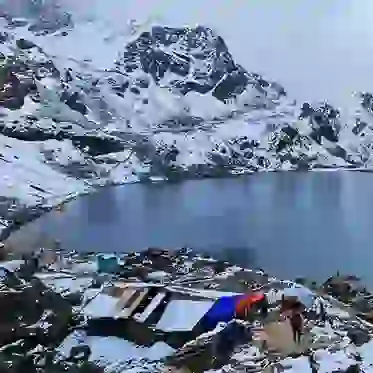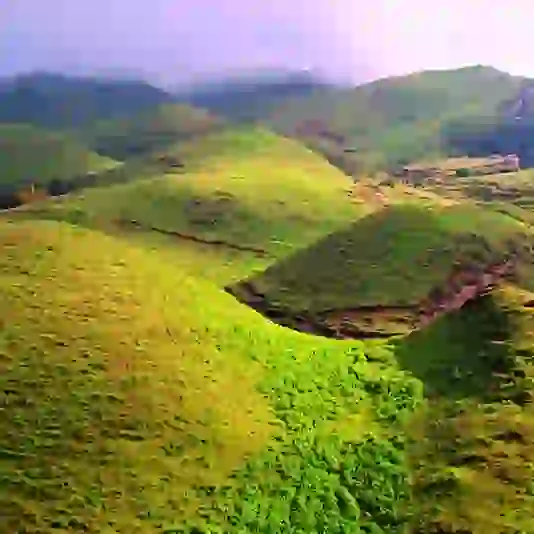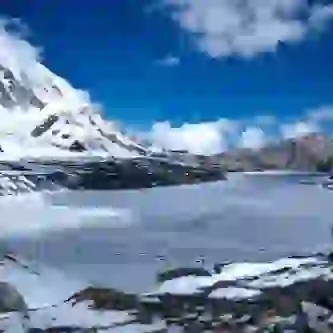How Nepal is Tackling Environmental Challenges through Eco-Friendly Practices

Environmental issues have emerged as a global phenomenon, pulling into stake the very health and well-being of our planet. Some of the problems risen in our world today are the increased acts of natural disasters, extinction of species, and air, water, and soil pollution.
Of all these challenges, Nepal has to date not taken serious steps towards mitigating environmental problems through green practices.
Nepal has the greatest biodiversity, although there is deforestation, soil erosion, and air and water pollution. However, there can be a silver lining thanks to the fact that organisations, including the government of Nepal and other organisations, have already put into place eco-friendly practices to reverse these challenges.
The Nepal Environmental and Scientific Services (NESS) and the Urban Management Program for Asia and the Pacific (UMPAP) are actively involved in the draft and implementation of such measures to eradicate or bring down environmental hazards in the country.
The paper elaborates on the approach Nepal has been pursuing to understand and improve upon environmental-related challenges through eco-friendly practices.
Now discussed are the different initiatives and programs of the Government of Nepal and various organisations regarding sustainable tourism promotion, forest conservation, renewable energy, waste management, and biodiversity.
Moreover, the role of local communities in Nepal in terms of environmental state conservation and eco-friendly practices is another aspect that will be dealt with.
Join us to learn creative and ecological solutions embraced by Nepal in mitigating the environmental problems and how these practices impacted the natural resources, economy, and society of that country.
Promoting Sustainable tourism

Although tourism as an industry has grown worldwide, its effects on the environment often go unnoticed in Nepal.
This has resulted in economic dependence on tourism, ecological degradation, cultural alienation, and social dislocation in the nation. These challenges have subsequently led a lot of tourists to find more responsible and sustainable ways to travel.
The State of Nepal has also recognised that it is incumbent upon them to balance economic growth pressures with environmental protection through sustainable tourism.
This means that sustainable tourism is sensitive to and protects all dimensions, from the socio-cultural environment to aspects related to the economy.
This means being a responsible tourist, optimising the total use of ecological resources for better preservation of natural heritage and biodiversity.
Connected with this respect for the socio-cultural dimension of sustainable tourism is the issue of preserving the authenticity of host communities. It means respect and a deep way of relating with the locals by learning from their culture and heritage and supporting the economy through the purchase of locally-made handicrafts.
The environmental dimension in sustainable tourism considers the reduction of Damage caused to the natural environment Through the impact of tourism as far as possible.
This implies conserving natural resources, reducing wastes, and minimising energy use. Some of these practices include the promotion of eco-trekking ventures, sensitising visitors to use biodegradable products, and supporting initiatives that ensure wildlife conservation and protection of habitats in Nepal.
Sustainable tourism's economic dimension significantly benefits the economy by aiding local communities.
This also includes the creation of jobs for the local population, making purchases from local businesses, and ensuring responsible tourism practices that lead to healthier host communities.
Conservation programs
It represents nearly all types of ecosystems and wildlife: 80 out of the 118 ecosystems found in Nepal. The government has declared 24% of the total area protected areas, including wildlife reserves, national parks, conservation areas, hunting reserves, and buffer zones. These are well-preserved and managed giant regions that the country has in store for natural resources, biodiversity, and cultural heritage protection.
Rich in renewable energy resources, the country's government has been tapping into them greatly to propel sustainable development and conservation. The legalisation of the concept of buffer zones in the mid-1990s is one of the ways Nepal conserves its natural resources. The buffer zones are :
- The following protected areas are managed for the maintenance of biodiversity.
- Promoting sustainable use of natural resources.
- Providing benefits to local communities.
Sustainable Communities Initiatives
2013: WWF Nepal and the Government of Nepal launched the Sustainable Communities Initiative in Alaltari under the Terai Arc Landscape Program.
It is a WWF conservation approach, executed jointly with the government in six protected areas of Terai, between Parsa Wildlife Reserve on the East and Shuklaphanta National Park on the West.
The program aims to create sustainable livelihoods among forestry and fishing communities while conserving biodiversity and natural resources.
Sustainable Efforts Implemented in Nepal
One perfect example of this program's efforts towards sustainability is the promotion of homestays. This policy can involve several things: one is to let tourists stay with people in the village so they can be exposed to the local culture and, at the same time, provide the people with another source of income.
Another initiative is the popularisation of biogas plants, which produce energy for cooking and space heating from animal waste. This reduces the dependency on wood and other biomass fuels.
It also works on turmeric enterprises, community clinics, and women-led micro-enterprises. A turmeric enterprise means cultivating turmeric, an alternative crop used instead of conventional commercial crops, which requires massive quantities of pesticides and fertilisers to enhance its growth.
Community clinics provide primary health care services to the local communities to maintain a healthy lifestyle. Women-based micro-entrepreneurship/small businesses include setting up agencies initiated and run by women, such as handicrafts and eco-tourism activities.
These initiatives help to contribute toward the conservation and sustainable development of Nepal's forest- and river-dependent communities. The country of Nepal is being given more exposure to the sustainability dimension through the application of the sun and water.
Renewable Energy
Nepal, however, presents significant challenges in meeting its vast energy needs since it harbours no known reserves of oil, gas, or coal. Most parts of the country remain inaccessible to isolated communities, and typical sources—biomass, human labour, and imported kerosene—have been under pressure to improve to meet demand.
Fortunately, by harnessing enormous renewable energy resources, Nepal has been able to surmount the challenges and strive relentlessly for sustainable development.
Biomass

Wood, dung, and agricultural residue are the significant components of biomass and are the primary energy sources for the Nepalese economy. As part of the household, 95% of the biomass is traditionally consumed for cooking and heating purposes, emitting many greenhouse gases into the atmosphere, contributing to unsustainable deforestation rates of 2.1 per cent, the highest in the region.
With this view, the Framework implements strategies for biomass energy under the National Energy Strategy to better manage the biomass situation in Nepal.
Biogas
Biogas, a product of the anaerobic digestion of organic matter, is another up-and-coming renewable energy source for Nepal.
With at least 1.2 million households herding and keeping cattle, Nepal's farming system's dependency on livestock becomes heavy, resulting in massive potential for biogas production.
The technical biogas potential corresponds to 57% in Terai, 37% in Hills, and 6% in remote hills; therefore, biogas is an attractive option for energy production and environmental preservation.
Solar
The other realisation focused on renewable energy development is Nepal's vast potential in solar energy. Having around 300 days of sunshine a year, the country receives daily solar radiation varying from 3.6 to 6.2 kWh per square meter daily, which is suitable for producing solar energy.
These include solar water heaters, grid-connected PV systems, solar lanterns, and solar home systems to ensure clean and reliable energy for thousands of Nepalese households and business operations.
The solar lanterns, locally called "solar tuki," have been widely accepted by the Nepalese, with the country now having 155,000 units in use as of 2010—a fact that epitomises their success.
These solar takes redefine the country's energy landscape with a capacity of 737 kW and provide clean and efficient solutions to their energy needs.
Furthermore, Nepal is powering over 2,600 villages with solar home systems—a fantastic feat with an output of 5.36 MWp.
This milestone, therefore, epitomises the country's political will toward developing and promoting clean energy for remote and isolated Indigenous communities as one of the crucial ways of ensuring energy security and conserving the environment.
Hydro
Due to its rough and mountainous alpine topography, Nepal's abundant flowing water also makes it an ideal place for hydroelectric power production. However, the southwest monsoon that delivers this water needs to be more consistent, with 80% of the rain in the country falling between June and September and 20% falling as snow during the dry season.
This inconsistency creates a severe engineering challenge for the mismatch during the winter, with severe load shedding for as long as 18 hours.
Notably, even with all these problems, the installed hydroelectric capacity of Nepal is 710 MW, with an overall theoretical potential of 83,290 MW and a technically feasible 45,610 MW.
Wind
Attempts have also been made to harness wind energy through renewable sources to cater to the present needs of Nepal. However, the potential of wind energy is constrained by the rugged and mountainous terrain and unpredictable climatic conditions.
The first generator wind turbine was a pioneering one; it had been mounted in Kagbeni of Mustang District in 1989 and had a capacity of 20 kW. Still, unfortunately, its blade and tower broke down within the first three months of operation.
But despite this setback, Nepal has kept on exploring the usage of wind energy with other wind turbines inaugurated in Chisapani of Shivapuri, Kathmandu and the Club Himalaya in Nagarkot. Regrettably, these wind turbines are not.
The Renewal Village Program of the Asian Development Bank has successfully installed wind turbines at Dhaubadi, the hamlet of Nawalparasi, under several challenges.
Although wind energy has less promising prospects than others in Nepal, this fact can't underestimate its potential.
The Potential of Renewable Energy
Open-heartedly, Nepal is such a nation showered with unrivalled natural beauty, scenic landscapes, and massive potential for renewable energy.
The country has achieved 710 MW of electricity from various hydro sources. However, the technical renewable energy potential reaches as high as 77,949 MW, with an annual generation potential of 226,460 GWh of clean electricity.
For hydropower, the overall theoretical potential of Nepal stands at 83,290 MW, out of which 45,610 MW is technically feasible. Out of these, only 42,133 MW can be harnessed in an economically viable manner. Thus making Nepal a potential powerhouse of hydropower.
Though less explored than hydroelectric power, the potential of wind energy remains very high for Nepal.
It can generate sufficient electricity with adequate land topography and climate.
Waste Management: Tackling a Growing Problem with Eco-friendly Solutions
It is no exception that the rising problem of waste management has come to the surface, just like in most developing countries, including Nepal. An increase in population, rapid urbanisation, and increasing industrialisation are some of the major causes of the tremendous growth in waste generated within the country in the past few years.
The good news, however, is that Nepal is pursuing waste segregation and recycling with vigour and utilising composting to reduce waste to a large extent by producing biogas.
Waste management in Nepal fulfils its functions by keeping the surroundings clean, providing healthy conditions, and developing observable sustainable development along ecological, economic, and societal axes of sustainability.
The Government of Nepal has taken a number of steps that fast-track the implementation of the SDGs, and the NPC is expected to serve as a lead institution on SDG monitoring.
Solid Waste Management Act, 2068
The Solid Waste Management Act of 2068 (2011) was legislated to address proper waste management in Nepal. Different aspects of waste management are clearly stated in the Act, along with the specification of roles and responsibilities from the Centre down to the locality.
As defined in Chapter 1, Clause 2 (a) of the Act, "Local Body" means the concerned municipality, sub-municipality, city, and the then Village Development Committee—the entities whose roles are critical in solid waste management.
Chapter 3 of the Act lays down the role of the local bodies in the process of solid waste management and constructs operation charges for methodologies described as related infrastructure, such as transfer stations, landfill sites, processing plants, compost plants, or biogas plants.
Further, local bodies are supposed to collect the waste, do the final disposal, and process it. They must see that the accumulated waste from door to door is utilised in other ways, such as by creating biogas or composting.
Though the system is odoriferous with challenges, waste management takes place in Nepal through associated initiatives taken towards eco-friendly solutions. Waste segregation and recycling programmes were initiated accordingly with other reduction techniques, incorporating composting and biogas generation.
Besides these, the GON is making all-out efforts to create awareness regarding waste management and the responsibility of a citizen towards a clean and healthy environment.
Nepal Climate Change Policy 2076 (2019)
With the increased world consciousness of the effect of waste on the environment, Nepal joins the trend. Hence, the country is committed to sustainability through different initiatives and policies amidst numerous challenges facing the management of waste.
Nepal Climate Change Policy 2076 (2019) acknowledges the importance of waste management and highlights the need to use biodegradable waste for energy production.
This strategy emphasises properly administering hazardous waste and segregating waste at the source, including households, hotels, and hospitals.
Environmental Protection Act, 2076 (2019)
With the world increasingly becoming conscious of the effect of waste on the environment, Nepal turns to eco-friendly solutions that will rid it of this growing menace. Be it challenged waste management systems or financially strained local authorities, the list goes on and on, but commitment appears to be at both the institutional and policy levels.
According to the Nepal Climate Change Policy, 2076 (2019), "There has to be more focus on using bi-degradable waste in energy production.".
This is an added strategy that calls for proper hazardous waste handling and segregation of wastes at the source, beginning at the householder level and going through to hotel and hospital generators.
Environmental Protection Act, 2076, 2019
The Environmental Protection Act of 2076 ensued as the beacon of hope, if not all, teaching life into this fundamental right with a pristine and unadulterated environment for the Nepalese.
This is the visionary Act that compels the polluter to pay a price for any damage he inflicts on Mother Nature while maintaining a balance, unshakeable between development and sustainability.
Chapter 2 of this seminal legislation is the crowning glory and entrenched the principle that stringent evaluation of environmental impacts shall be a precondition before a development project takes off.
Through the Initial Environment Examination report and Environment Impact Assessment, the Nepalese government has pledged to make development strides in tandem with nature.
Chapter 3, the "Pollution Control" chapter, is veritably a tour de force. Before us, it lays down the required standards to lessen or control the harmful effects of pollution due to vehicles, industrial concerns, hotels, restaurants, and the emission or discharge of dangerous substances.
Subsection 2: No one shall be permitted to cause harassment to the public life, health and environment. Everybody shall have to abide by the stringent standards set by the Government of Nepal.
The Environmental Protection Act, 2076 BS, thus, has become an achievement to be proud of in the attainment towards a Cleaner, Greener, and more Sustainable Nepal.
Sustainable Development Goals (SDGs), 2016-2030
Cities would reduce their per capita environmental impact by improving air quality and civic waste management, aligning with global SDGs, and localising appropriate targets for Nepal.
Some targets include ensuring that 100% sewerage services are extended to all municipalities by 2020 while mandating the segregation of their wastes within private hospitals by 2017.
Finally, it must be noted that waste management is an issue of remarkable similarity affecting various regions of sustainable development. Be that as it may, the progress of Nepal's Waste Management Plan rests on the cooperation and participation of different stakeholders working day in and out on this process.
The government has a critical role in policy formulation and enforcement; at the local level, there is waste collection and infrastructure development by local bodies.
Biodiversity Conservation
What stands out with the natural world and all its inhabitants is, undeniably, its beauty. However, what continues to get close to being forgotten is that our survival depends on their existence.
The delicate balance of biodiversity on which our very breath and food security hang is being perturbed globally by our actions.
It is in the next few years that the future course towards which biodiversity and life on earth are heading will be defined. Man, as an aware being, should grasp and realise the seriousness of the issue and act towards the preservation of the richness of nature.
Mitigating Solution: REDD+ (Reducing Emissions from Deforestation and Forest Degradation)
Since 2008, Nepal has a working experience in the REDD+ process. The main focus of REDD+ initially was oriented towards reducing deforestation and forest degradation emissions. Nine guiding principles—Out of its nine guiding principles, the governing principle of Nepal's REDD+ refers to respect for social and environmental safeguards.
The second objective of REDD+ is to make sure that measures taken for safeguards are effectively implemented.
That means another critical focus area for the Nepal REDD+ program is biodiversity conservation, along with enhanced carbon stock in the project sites.
Implementation of Emission Reduction Program Document (ERPD)
Implementation of ERPD in Terai Arc Landscape could turn out to be one major factor for the attainment of sustainable forest management, enhanced carbon sequestration, and maintained ecosystem services with reduced deforestation and forest degradation.
It has also emphasised much on the conservation of biodiversity, promotion of natural regeneration, restoration of landscapes, protection of greenery's vulnerable species, and maintenance of the project area's ecological integrity.
This thus means that with the implementation of REDD+, carbon stock increase in Nepal will automatically enhance biodiversity conservation.
UNWTO (United Nations World Tourism Organization)
According to the UN-World Tourism Organization, nature and adventure travel are one of the fastest-growing tourism sectors.
Of the world's fast-emerging industries is 'naturebased tourism', with many visiting these national parks and other wilderness areas located in developing countries that contain large numbers of plant and animal species.
It has 12 national parks, one hunting reserve, six conservation areas, one wildlife reserve, and 13 buffer zones, which amount to a total land area coverage of 23.39% or 34,419.75 sq. km of the land area in Nepal.
It is one of the successful approaches towards mainstreaming tourism without compromising the core values ascribed to biodiversity conservation in the protected area management system in Nepal.
If we can practice responsible tourism, then the beauty and biodiversity of Nepal's natural resources can be conserved and preserved for generations to come.
The conservation of biodiversity is such an urgent matter that must be addressed collectively.Through the implementation of REDD+, promotion of responsible tourism, we will go lengths in the preservation of the natural world and thus ensure a long-term sustainable future.
We care for and protect the beauty of diversity in the natural world we are privileged to be part of.
Sustainable Tourism within Reach: An Exigency to Eco-friendly Practice in Nepal
This journey on biodiversity conservation in Nepal comes full circle to the ringing realisation that nature plays a critical role in our lives. Our very survival is closely linked to the balance of ecosystems that compose our planet, and biodiversity loss puts life at risk.
Evident from the backdrop, Nepal has initiated efforts through the conception of the Environmental Protection Act and REDD+, which are commendable mechanisms to nurture its pristine biodiversity. The nation has put itself forward to sustain a delicate balance between developmental needs and responsible environmental concerns by encouraging sustainable forest management practices and adopting protective measures for fragile species.
However, protecting this planet is not only the duty of the government and policymakers.
A lot of differences can be made by us as individuals if we do it once we start with our daily living. Seeing in regards to this, there are a few eco-friendly practices that should be followed if the aim is to preserve the true beauty of Nepal, not here: reduce plastic use, save water, and eco-friendly travel, among many others.
As visitors, we must respect and take good care of the variety of flora and fauna that make up this beautiful landscape. We have to practice responsible tourism and leave the most miniature footprint possible so that even coming down through the walls of a lodge; future generations may still be able to marvel at the richness of Nepal's biodiversity.
In conclusion, we should always remember that the future of our planet lies in our hands. As such, let us work for a future of sustainability, encoded at the core of our striving for biodiversity conservation. So may we leave behind a legacy toward responsible stewardship for generations to come.
